
WARSHIP BUILDERS
TITLES IN THE SERIES

Progressives in Navy Blue
Maritime Strategy, American Empire, and the Transformation of U.S. Naval Identity, 18731898
Learning War
The Evolution of Fighting Doctrine in the U.S. Navy, 18981945
Victory without Peace
The United States Navy in European Waters, 19191924
Admiral John S. McCain and the Triumph of Naval Air Power
Churchills Phoney War
A Study in Folly and Frustration
COSSAC
Lt. Gen. Sir Frederick Morgan and the Genesis of Operation OVERLORD
The Emergence of American Amphibious Warfare, 18981945
U-Boat Commander Oskar Kusch
Anatomy of a Nazi-Era Betrayal and Judicial Murde
STUDIES IN NAVAL HISTORY AND SEA POWER
Christopher M. Bell and James C. Bradford, editors

Studies in Naval History and Sea Power advances our understanding of sea power and its role in global security by publishing significant new scholarship on navies and naval affairs. The series presents specialists in naval history, as well as students of sea power, with works that cover the role of the worlds naval powers, from the ancient world to the navies and coast guards of today. The works in Studies in Naval History and Sea Power examine all aspects of navies and conflict at sea, including naval operations, strategy, and tactics, as well as the intersections of sea power and diplomacy, navies and technology, sea services and civilian societies, and the financing and administration of seagoing military forces.
WARSHIP BUILDERS
AN INDUSTRIAL HISTORY OF
U.S. Naval Shipbuilding, 19221945
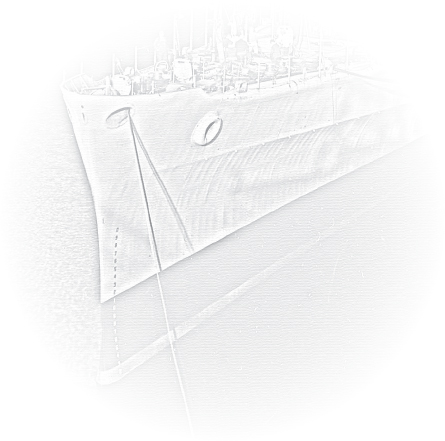
THOMAS HEINRICH
Naval Institute Press
Annapolis, Maryland
Naval Institute Press
291 Wood Road
Annapolis, MD 21402
2020 by Thomas Heinrich
All rights reserved. No part of this book may be reproduced or utilized in any form or by any means, electronic or mechanical, including photocopying and recording, or by any information storage and retrieval system, without permission in writing from the publisher.
Library of Congress Cataloging-in-Publication Data
Names: Heinrich, Thomas R., (date) author.
Title: Warship builders : an industrial history of U.S. naval shipbuilding, 19221945 / Thomas Heinrich.
Other titles: Industrial history of U.S. naval shipbuilding, 19221945
Description: Annapolis, Maryland : Naval Institute Press, [2020] | Series: Studies in Naval History and Sea Power | Includes bibliographical references and index.
Identifiers: LCCN 2020035555 (print) | LCCN 2020035556 (ebook) | ISBN 9781682475379 (hardback) | ISBN 9781682475539 (ebook) | ISBN 9781682475539 (epub)
Subjects: LCSH: Shipbuilding industryUnited StatesHistory20th century. | WarshipsUnited StatesHistory20th century. | ShipyardsUnited StatesHistory20th century.
Classification: LCC VM299.6 .H453 2020 (print) | LCC VM299.6 (ebook) | DDC 338.4/7623825097309041dc23
LC record available at https://lccn.loc.gov/2020035555
LC ebook record available at https://lccn.loc.gov/2020035556
 Print editions meet the requirements of ANSI/NISO z39.48-1992 (Permanence of Paper). Printed in the United States of America.
Print editions meet the requirements of ANSI/NISO z39.48-1992 (Permanence of Paper). Printed in the United States of America.
28 27 26 25 24 23 22 21 209 8 7 6 5 4 3 2 1
First printing
To Felix, Luka, and Fritz

CONTENTS
ILLUSTRATIONS
PHOTOGRAPHS
TABLES
CHARTS
FIGURES
ACKNOWLEDGMENTS
O ver the past decade, I have accumulated a vast debt of gratitude to the people who have supported this project. Emma Raub at the Baruch College Newman Library patiently processed my innumerable interlibrary loan requests. Research staffers at the National Archives in College Park, Maryland, who helped me unearth a treasure trove of U.S. Navy records include Marci Bayer, Michael Bloomfield, Paul Cogan, Susan Gillett, Jacob Haywood, Russell Hill, Jacob Lusk, Haley Maynard, Amy Morgan, and Lauren Theodore. Special thanks to Nate Patch and Alicia Henneberry. At the regional branches of the National Archives, archivists Gail Farr and Stephen Charla in Philadelphia and Kelly McAnnaney in New York provided invaluable research advice, as did Sandra Fox at the Navy Department Library at the Washington, DC, Navy Yard, Elizabeth McGorty at the Brooklyn Navy Yard Development Corporation Archives, Tiffany Charles at the Wisconsin Maritime Museum, and Craig Burns at the Independence Seaport Museum Archives in Philadelphia. Thanks also to German archivists Marion Alpert, Jrn Brinkhus, Imke Brnjes, and Konrad Elmshuser at the Bremen State Archives and Christian Bse at the Krupp Historical Archives in Essen. In Britain, I received helpful guidance from Sam Maddra and Emma Yan at the University of Glasgow Archives; Nerys Tunnicliffe and Barbara McLean of the Glasgow City Archives; Zoe Walter of the Tyne & Wear Archives in Newcastle; and Will Meredith of the Wirral Archives in Birkenhead.
Gerry Krieg did a masterful job with the shipyard maps.
My fellow historians have my gratitude for their comments and criticisms, especially Bob Batchelor, Christian Ebhardt, David Edgerton, Jeff Kerr Ritchie, Eike Lehmann, Chris Madsen, Chris Miller, William D. ONeill, Nathan Okun, Donna Rilling, Jrgen Rohweder, Neil Rollings, Philip Scranton, Amy Slaton, Heinrich Walle, and David Winkler. Special thanks to my friends and colleagues in the Baruch College History Department and participants in our roundtable: Jed Abrahamian, Carol Berkin, Anna Boozer, Charlotte Brooks, Stan Buder, Ana Calero, Yolanda Cordero, T. J. Desch-Obi, Julie Des Jardins, Vincent DiGirolamo, Zoe Griffith, Johanna Fernandez, Elizabeth Heath, Martina Nguyen, Kathy Pence, Mark Rice, Tansen Sen, Andrew Sloin, Clarence Taylor, Randolph Trumbach, and Cynthia Whittaker. Over the years, I was fortunate to present my research at meetings of the Business History Conference, the Association of Business Historians, the Hagley Museum & Library Research Seminar Series, Yale Universitys Technology and Strategy Workshop, the International Maritime Economic History Association Conference, the National Museum for the Royal Navy, the New York Military Affairs Symposium, the German Society for Seafaring and Maritime History (Deutsche Gesellschaft fr Schiffahrts- und Marinegeschichte), the Maritime Heritage Conference, the National Iron and Steel Museum, and the Gilder Lehrman Institute of American History. Many thanks to the organizers and my fellow panelists. The deans of Baruch Colleges Weissman School of Arts and Sciences Jeff Peck and Aldemaro Romero generously provided research and travel funding, as did the PSC-CUNY Research Foundation and the American Philosophical Society.
Rudolf Boch, Michael Frisch, Thomas Childers, George Iggers (), Mike Katz (), Jrgen Kocka, Reinhart Koselleck (), Walter Licht, and Hans-Ulrich Wehler () apprenticed me to the historians craft at the University of Bielefeld in Germany, SUNY Buffalo, and the University of Pennsylvania.
Next page
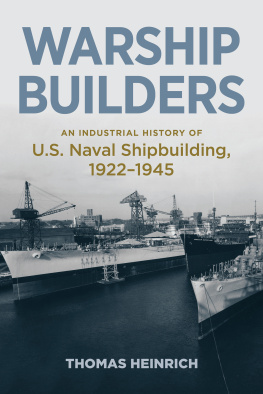
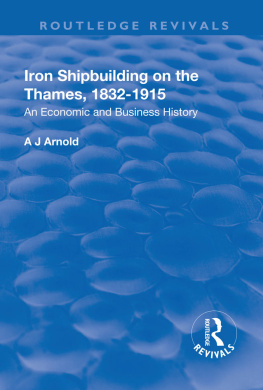

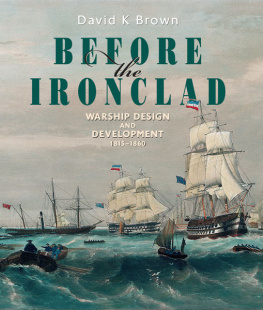

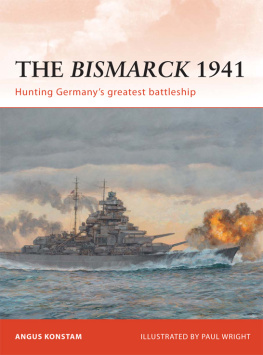
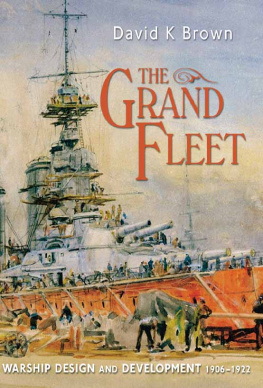
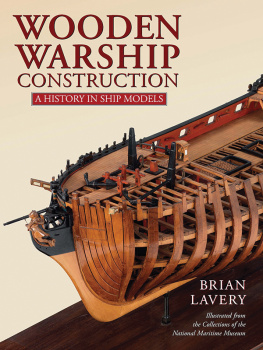
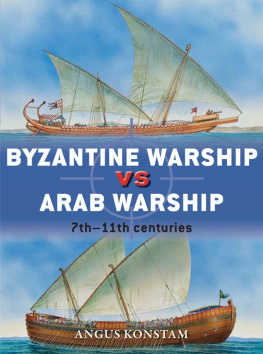

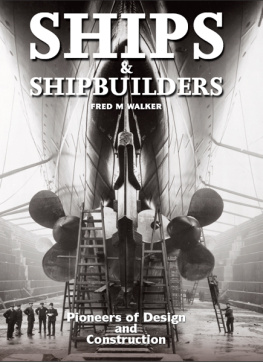




 Print editions meet the requirements of ANSI/NISO z39.48-1992 (Permanence of Paper). Printed in the United States of America.
Print editions meet the requirements of ANSI/NISO z39.48-1992 (Permanence of Paper). Printed in the United States of America.